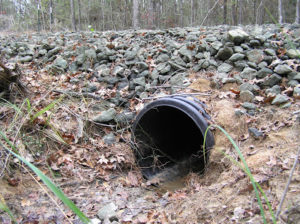Dependable Pad Construction for Your Task Needs
Dependable Pad Construction for Your Task Needs
Blog Article
Understanding Culvert Setup: Boost Your Land Water Drainage Initiatives
From picking the ideal materials to carrying out finest methods, grasping culvert installment can dramatically boost the effectiveness and longevity of your land drainage system. By understanding the intricacies of culvert setup, you can maximize your water drainage efforts and make sure sustainable land use practices.
Importance of Culvert Installment
Ensuring proper culvert installment is extremely important for preserving effective land drainage systems. Culverts play a crucial duty in managing water flow, avoiding disintegration, and preserving the architectural honesty of roads, bridges, and other facilities. Appropriate installation of culverts helps to carry water far from roadways and structures, reducing the threat of flooding and water damages. In addition, well-installed culverts aid in avoiding debris buildup, which can result in blockages and lowered water flow.
Correct Sizing and Placement

Appropriate placement of culverts is similarly critical. Culverts must be placed at the least expensive point of the location calling for water drainage to make sure effective water flow.
Material Selection Tips
Choosing the ideal materials is vital in making sure the toughness and capability of culverts for reliable land drainage systems. When choosing materials for culvert installation, it is crucial to think about factors such as the water flow rate, dirt structure, and environmental problems of the site.
One of the most usual products utilized for culverts is corrugated steel. Concrete culverts are excellent for locations vulnerable to rust or when a much longer solution life is wanted.
For ecologically sensitive locations, plastic culverts might be chosen. Plastic culverts are light-weight, immune to rust, and easy to move and set up. They are likewise recognized for their smooth inside, which helps to keep reliable water flow. In addition, in locations where all-natural looks are necessary, materials like rock or timber can be used to create culverts that mix effortlessly into the environments. Eventually, the option of material must be based upon an extensive analysis of the details demands and problems of the land water drainage job.
Installment Methods and Finest Practices
Given the vital value of product option in making sure the capability and durability of culverts, the setup methods and best methods play a critical function in the overall success of land drain systems. Appropriate installment is vital to preventing problems such as leakages, breaks down, or clogs that can endanger the effectiveness of the culvert.

During setup, care must be taken to straighten original site the culvert properly and provide proper assistance to stop contortion. Backfilling should be done slowly and compressed in layers to avoid spaces and negotiation. Proper compaction is vital to protect against changing or sinking of the culvert over time.

Maintenance and Long-Term Care
Implementing a thorough maintenance plan is necessary for making sure the long life and efficient efficiency of culverts in land drain systems. Clearing debris such as leaves, branches, and debris is crucial to avoid clogging and keep the flow ability of the culvert.
Additionally, attending to any problems without delay and making essential repair work or substitutes can aid protect against costly damages in the future. Routine maintenance tasks may consist of cleansing, repairing joints, strengthening inlet and outlet structures, and making certain proper slope and placement of the culvert. Keeping detailed records of upkeep tasks, examinations, and repairs is crucial for tracking the problem of the culvert in time and intending future maintenance requirements. By staying proactive and carrying out an extensive upkeep strategy, land drainage systems can run properly and efficiently for many years to come.
Conclusion
To conclude, mastering culvert setup is crucial for effective land drainage. Correct sizing, placement, product choice, installment methods, and upkeep are vital factors to consider. By adhering to finest techniques and read this post here executing long-term care techniques, landowners can boost their water drainage efforts and make certain the longevity and functionality of their culverts. It is vital to focus on explanation these facets to stop water damage, disintegration, and other pricey concerns on the property.
Report this page